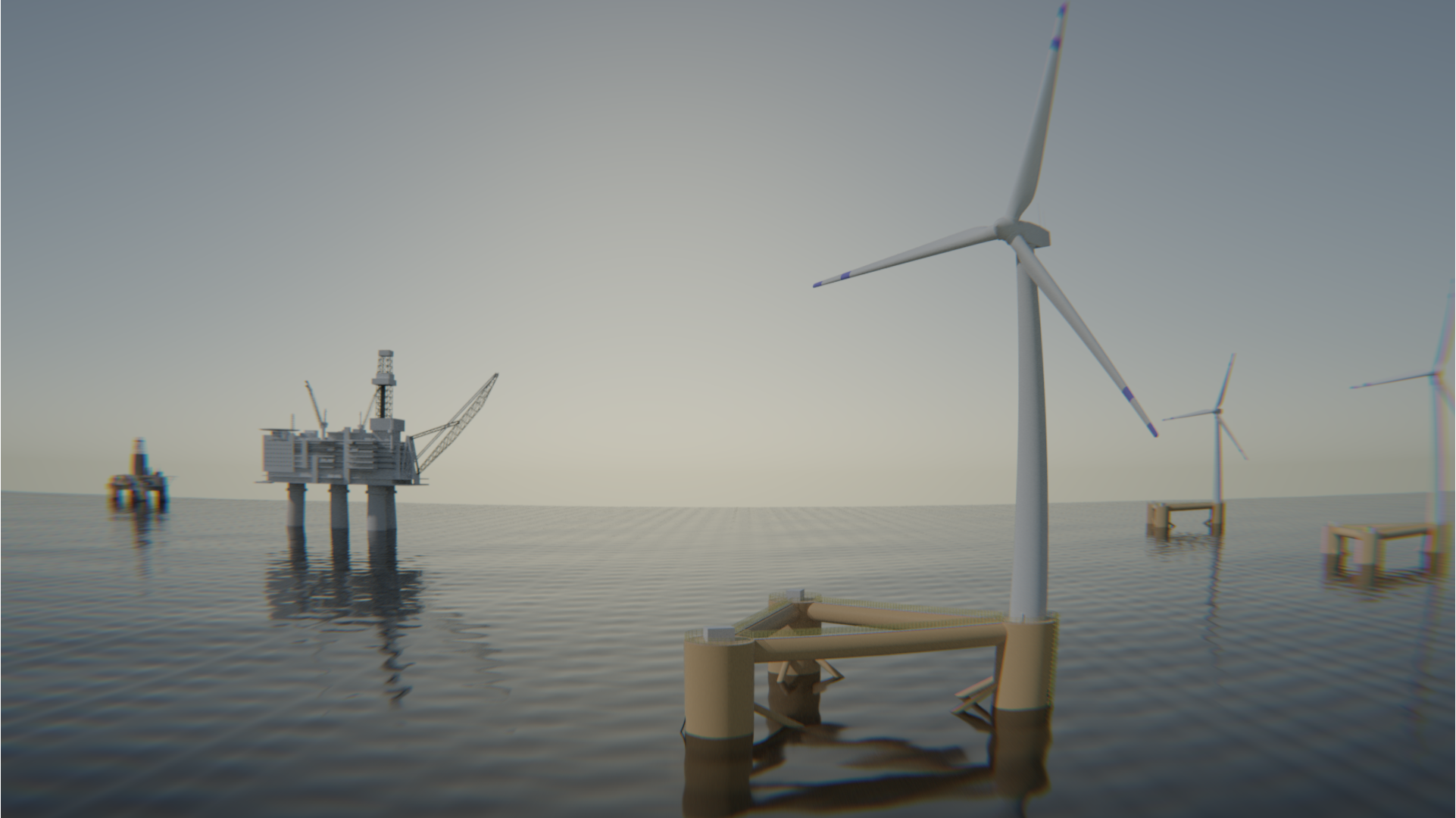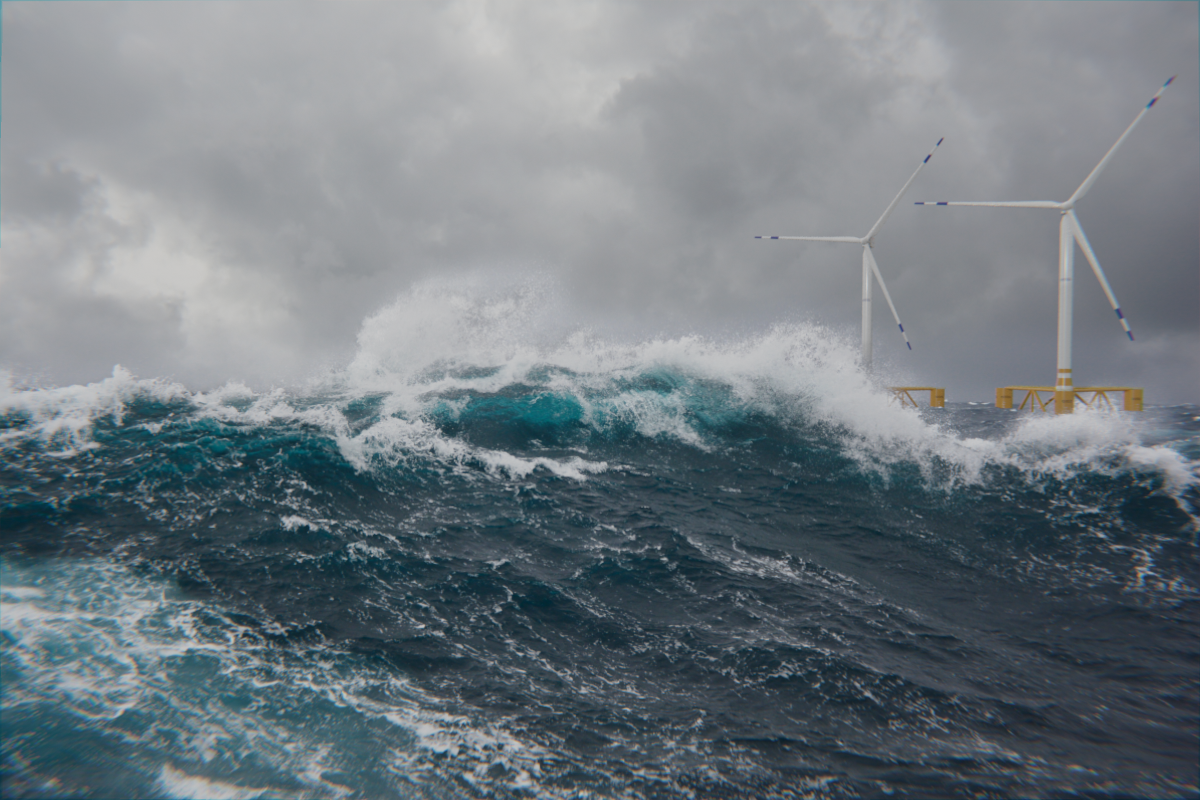
The world needs an energy transition away from fossil fuels. This is to reach the emission reduction target set out by the Paris Agreement of keeping global warming to well below 2°C, and pursuing efforts to limit it to 1.5°C. According to the agreement, the EU and its member states are committed to a net domestic reduction of at least 55% in greenhouse gas emissions by 2030 compared to 1990.
Oil and gas companies must diversify their portfolios into renewable energy while lowering the impact from their oil and gas installations.
For a long time, electrification from shore was the only way to significantly reduce emissions from offshore installations. There are at least three reasons why this is not a viable solution going forward:
- It comes at a great cost
- It has major impact on power grids onshore
- It poses a major challenge for installations far offshore with no immediate access to a power grid
Also, this requires zero emission electricity from the power grid onshore. This is unavailable in most countries.
There are available alternatives to shore power, and the technology develops fast. However, there are many myths on how we can lower emissions from offshore installations.
We want to debunk these myths and present Odfjell Oceanwind’s approach to the challenge of implementing renewable energy on oil and gas installations offshore.
Offshore wind is a real alternative that will cut emissions from oil and gas installations offshore at a competitive price and with a much higher potential for emission reduction than what is recognised today.
Myth #1: There are no real alternatives to shore power
Technological advances and the supply chain are maturing every day, and offshore wind is now a real alternative to shore power for the material part of oil and gas installations offshore. Accepting shore power as the only option comes with some rather negative consequences as we are excluding emission reductions from all installations far away from established grids.
Also, we are excluding fields nearing the end of their life cycle, where large capex investments cannot be defended. Combined, it means we are conceding that the 2030 emission reduction targets cannot be reached by the oil and gas industry.
Add to this the impact on local eco systems and fisheries of digging hundreds of kilometres of cables on the seabed.
Odfjell Oceanwind offers a rental model for Mobile Offshore Wind Units (MOWUs), which is attractive for oil and gas fields far away from power grids, and/or with limited remaining life. MOWUs may be reused on several locations with a positive business case for the operator. The number of MOWUs is tailored to the power needs for the specific field or installation and contract periods may be extended depending on production plan.
Even though the emission reducing impact of shore power is evident, it is far from a “one size fits all” solution. Offshore wind is a real alternative to shore power, and the Odfjell Oceanwind MOWUs offer a flexibility that shore power simply does not have. Temporary needs should be met with temporary solutions. If we are to reach the 2030 emission targets, we need to start treating offshore wind as a serious contender to shore power and lay a foundation for rolling this out quickly.
Myth #2: Offshore wind can only support emission reductions of 30%
Solar power, wind power and wave power all come with the disadvantage that they are not a permanent supplier of power every day, all year around. Oil and gas installations rely on a constant source of energy.
In order to connect a platform to an offshore wind turbine of a meaningful size, the wind turbine is installed on a separate unit and connected to the platform via a subsea cable. This technology is now in use on the first field specific wind farms supplying power to oil and gas installations. Equinor’s Hywind Tampen consists of eleven 8MW floating wind turbines with a total installed capacity of 88MW. These provide wind power to the Snorre and Gullfaks fields.
However, the expected emission reduction from Hywind Tampen is only about 30%. Even on a larger scale, this will not get us to the 2030 target, as the fluctuating power supply from the wind turbine means the operator needs to run the gas turbines on idle in order to ensure uninterrupted power supply.
Energy storage is required to increase the effect of offshore wind power. Wind power in regions with wind qualities like in the North Sea has the potential to reduce CO2-emissions from a platform by up to 70% compared to power generation from gas turbines.
To achieve this effect, the operator must be able to shut off all gas turbines during periods of peak wind power production. Odfjell Oceanwind’s patented WindGrid™ system gives uninterrupted power supply, allowing the operator to safely start up the generators when the wind turbine generator stops producing the required power.
This solution has been validated by DNV, which you can read more about here.
Myth #3: Floating offshore wind is too expensive
It is a well-known fact that floating wind is expensive and difficult to commercialise compared to bottom fixed offshore wind. We must consider that offshore floating wind is a maturing industry, and the costs are higher due to inefficient supply chains.
Still, through case studies on oil and gas installations on the Norwegian Continental Shelf, Odfjell Oceanwind has good merit to claim that floating offshore wind can support a positive business case for operators.
Floating offshore wind turbines with the WindGrid™ system will offer a cost of energy that is equal or lower than the current cost of energy for many platforms. Looking at a project cost analysis, we need to consider the increased costs that emissions will imply for the operators going forward, not just the isolated cost of energy.
We know that taxes on greenhouse gases will increase. It will be more and more expensive for operators to continue “as is" with gas turbines powering their installations. For projects with a gap between existing energy cost and the cost of floating offshore wind, funding could be available from governments.

What is the all inclusive cost of energy? By all-inclusive cost of energy, we are referring to all direct and indirect costs related to energy consumption for the operator. Even though most installations are powered with gas from the field’s reservoir, it is still a material operational cost.
The principles for calculating the all-inclusive cost of energy are:
- Investment in current power generators is considered sunk cost and not included.
- Cost of energy is calculated on USD/kWh basis.
- Basis for calculation is the cost of burning a certain mass of fuel.
- Different power generator efficiencies must be analysed, as the effect has direct impact on CO2
- Fuel price is determined by purchase price with added cost for logistics.
- Taxes on fuel and greenhouse gas emissions are included.
- Cost of CO2 quotas is included.
Odfjell Oceanwind has developed calculation methods to estimate fluctuating fuel prices, increased taxes over time and the all-inclusive fuel cost. The all-inclusive fuel cost factors in gas turbine efficiency and the effect of switching from gas to diesel combustion.
Read more in the the e-book Why a MOWU is such a great ideaOur analysis shows that the Odfjell Oceanwind business model is a positive business case for operators compared to status quo, as their all-inclusive cost of energy will go down using MOWUs for their energy needs.
Consequently, the statement of floating offshore wind being too expensive no longer holds any merit.
We have now provided you with how we believe floating offshore wind is the solution for the decarbonisation of offshore oil and gas installations.
If you want to know more about Odfjell Oceanwind, you can contact us on: info@oceanwind.no




